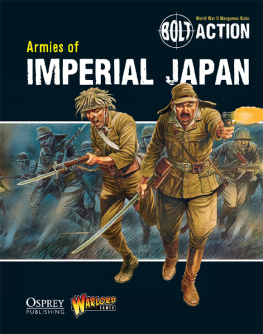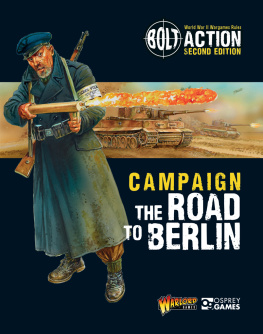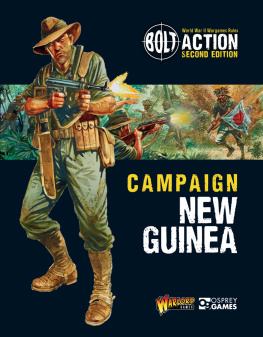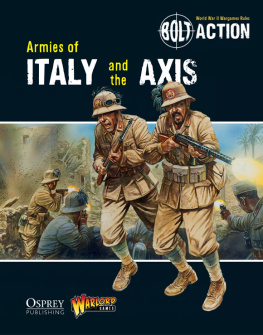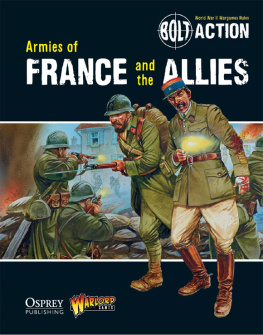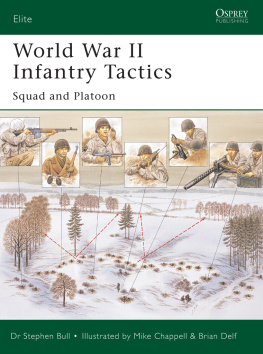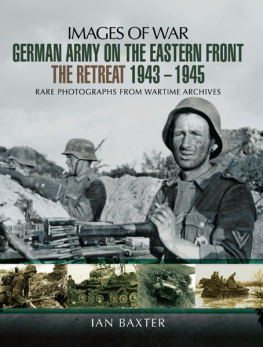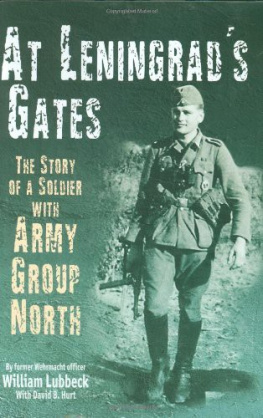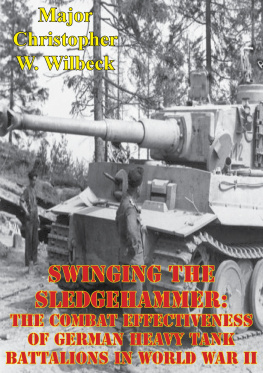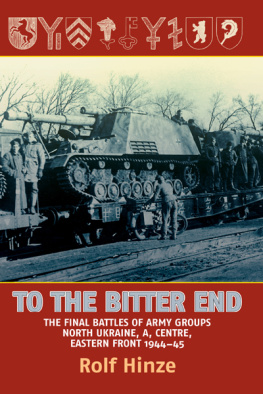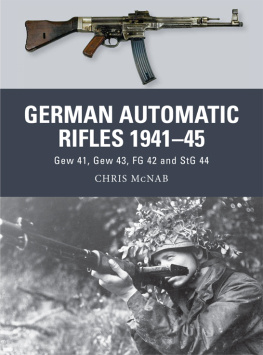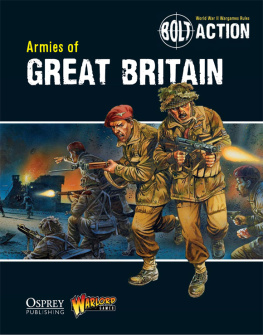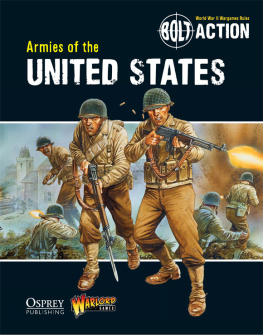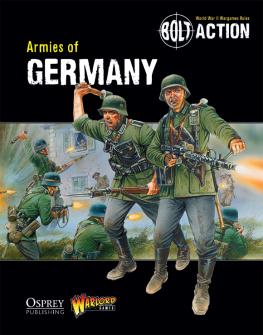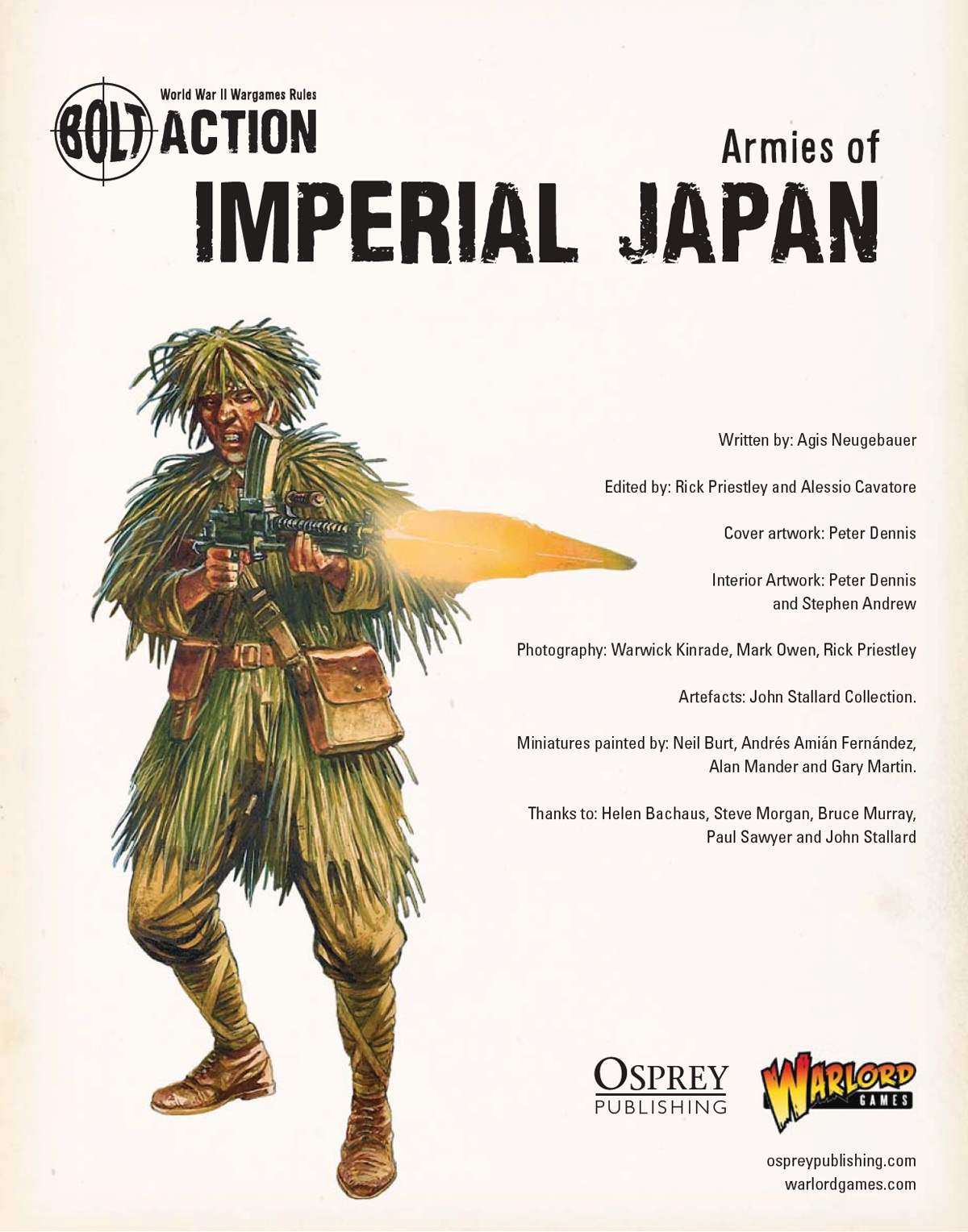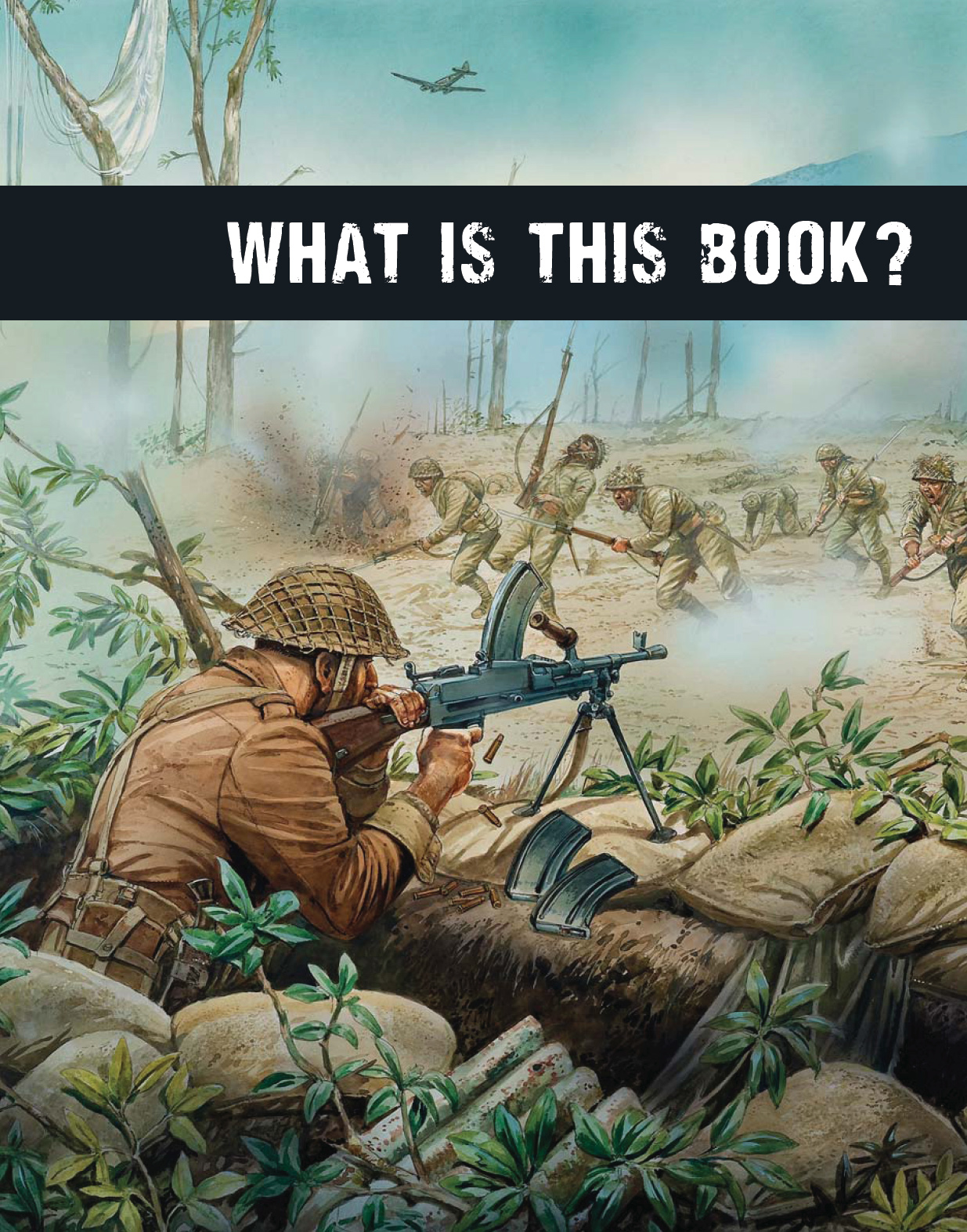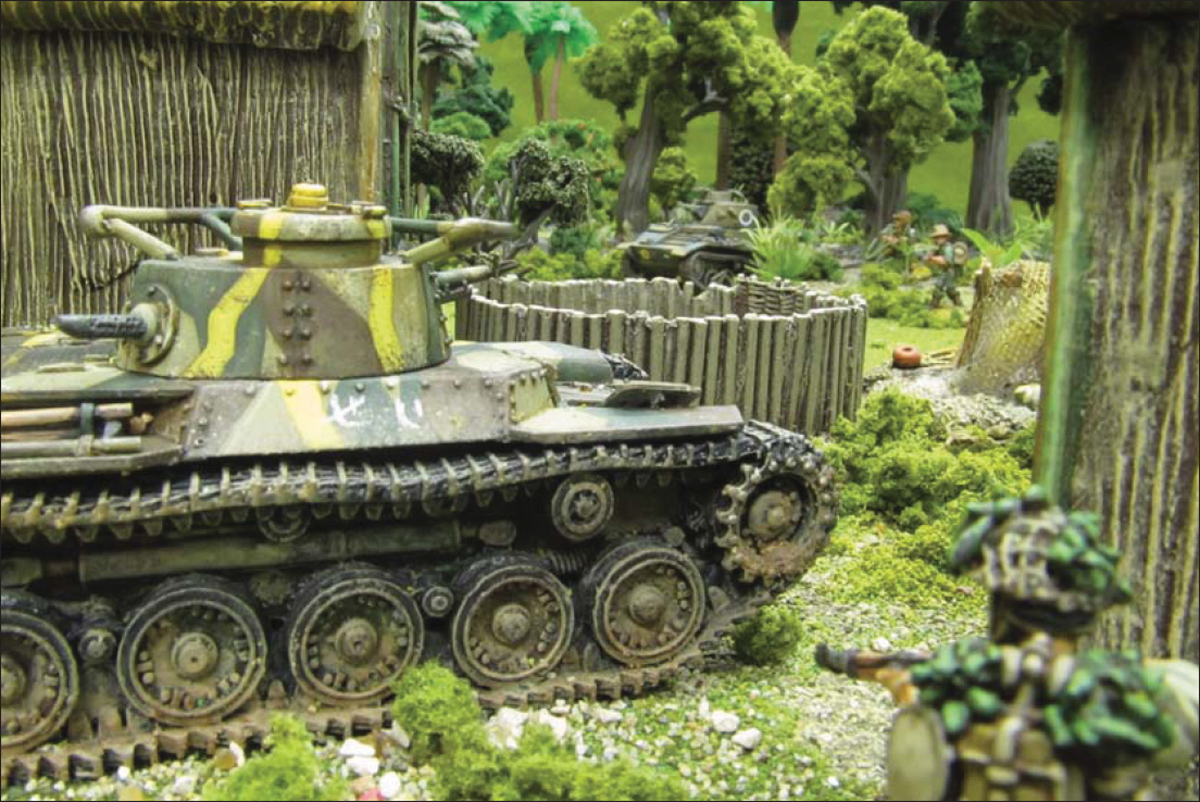CONTENTS
British Bren gun team facing a Japanese banzai charge, by Peter Dennis Osprey Publishing Ltd. Taken from Campaign 229: Kohima 1944.
T his is a supplement for the Bolt Action tabletop wargame, and it deals with the Imperial Japanese Army and Special Naval Landing Forces of World War II. Within you will find background and details of Imperial Japanese Armys organisation and equipment from the beginning of the war (the invasion of Manchuria in 1931) to the very end (the dropping of the first atomic bomb in 1945).
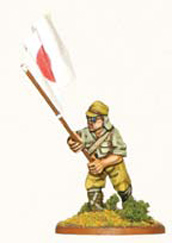
Central to this book is its Army List. This includes all the information you will need to play games using the Imperial Japanese Army. This large list details all the main troop types, vehicles and equipment fielded by the Imperial Japanese Army during World War II. Alongside this central list are 12 Theatre Selectors, which give the force details for different periods and theatres of the war. Over more than 14 years of fighting the Imperial Japanese Army changed a lot, with many units and vehicles that were common in 1931 being rendered obsolete by 1945, and the Theatre Selectors allow players to select forces suitable for the theatre they are recreating. To avoid a lot of repetition, the central list includes all the options and rules information, with the Theatre Selectors narrowing this down to the most appropriate.
Even the Theatre Selectors cannot cover every exception and oddity, and are not definitive, but are designed to give a flavour and character to a force when fighting in a particular theatre. Exceptions are perfectly acceptable with agreement between players, but cannot be included in the main lists without becoming the rule.
Banzai! The Imperial Japanese army goes in with sword and bayonet
Two Type 89B Yi-Go medium tanks and a Type 94 tankette advance towards the Chinese lines, by Peter Dennis Osprey Publishing Ltd. Taken from Elite 169: World War II Japanese Tank Tactics.
I shall run wild considerably for the first six months or a year, but I have utterly no confidence for the second and third years.
Isoroku Yamamoto
THE INVASION OF MANCHURIA
Manchuria had long been a disputed region divided between Russia and China, dominated by local warlords, and falling increasingly under Japanese influence. To the Japanese, Manchuria represented an essential source of raw materials, especially coal. Control of the region was seen to be a necessary precursor to Japans plans for a wider Asian war and, in 1931, Japanese troops invaded and established the puppet state of Manchukuo.
After the defeat of the Chinese in Manchuria, sporadic fighting continued between Japanese and Chinese forces in northern China until 1937 the beginning of what is known in the West as the Second SinoJapanese War. The Japanese quickly captured Shanghai, followed by the capital: Nanking. The savagery of the fighting and toll of civilian lives were to become notorious and would do much to turn US public opinion against Japan. As many as 300,000 Chinese lost their lives during the Rape of Nanking between 1937 and 1939.
By the time World War II began in Europe, Japan and China had been in conflict for eight years. The fighting in China had already reached something of a stalemate by 1939, with rival armies of the Chinese Communists and Nationalists (the Kuomintang, or KMT) putting aside their differences to oppose the Japanese invasion. The Chinese were armed or assisted by various foreign powers including Germany, Russia and America. Japanese and Russian forces clashed on the Manchurian/Mongolian borders in 1939, resulting in the battles of the Khalkhin Gol where the Red Army decisively defeated the Japanese at Nomonhan.
A Type 97 Chi-Ha prepares to ambush the British
WAR IN THE SOUTH
The Japanese Armys humiliating defeat at the hands of the Russians was to have profound effects upon the course of the war both in Europe and Asia. Fearful of facing enemies to east and west, the Russians concluded a non-aggression pact with Germany and collaborated with them in the Partition of Poland. Meanwhile, the Japanese setback undercut the influence of those in the Japanese Army who argued for a strategy of conquest in the north, boosting the authority of those who favoured a strategy based on the south and the Pacific. With the European colonial powers embroiled in war elsewhere, and American metal and oil embargoes choking Japans industry, the scarcely defended resources of southern Asia were identified as Japans new target. As a result of this change of strategy, the Japanese concluded a non-aggression pact with Russia that would hold until the Russian invasion of Manchuria during the very last days of the war.
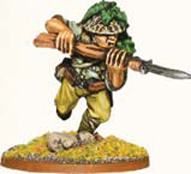
The attack upon Pearl Harbor on 7 December 1941 opened hostilities between the United States and Imperial Japan, and signalled the start of Japans conquest of southern Asia. At the same time, the Japanese attacked the Dutch East Indies, the US-controlled Philippines, and the British colonies of Hong Kong and Malaya, resulting in the first major land battle of the campaign against the Indian Army at Kota Bharu. Everywhere, the Japanese were victorious, forcing their enemies into a rapid retreat.
THE BURMA CAMPAIGN
By January 1942, Japanese armies were poised to begin the push through Burma and toward British-controlled India. The Burma campaign would prove to be one of the longest and toughest of the entire war and would absorb a considerable portion of the Japanese fighting strength. On the Allied side, the Burma campaign involved British Commonwealth, Chinese and American armies. The fighting in Burma and subsequent attempted invasion of India took its toll upon the Japanese. From late 1944 the Allies would turn to the offensive, and soon the invaders were in full retreat. A major offensive was launched to capture Rangoon in April 1945 following the battle of Central Burma, but by then the Japanese had already abandoned the city. By the time the Allies were ready to conclude the campaign, events elsewhere were to put an end to the war and all further conflict.
DEATH BEFORE DISHONOUR
Japanese armed forces saw death in battle differently than their Western opponents. This can be seen in the various terms by which Japanese bulletins refer to soldiers lost in battle.

